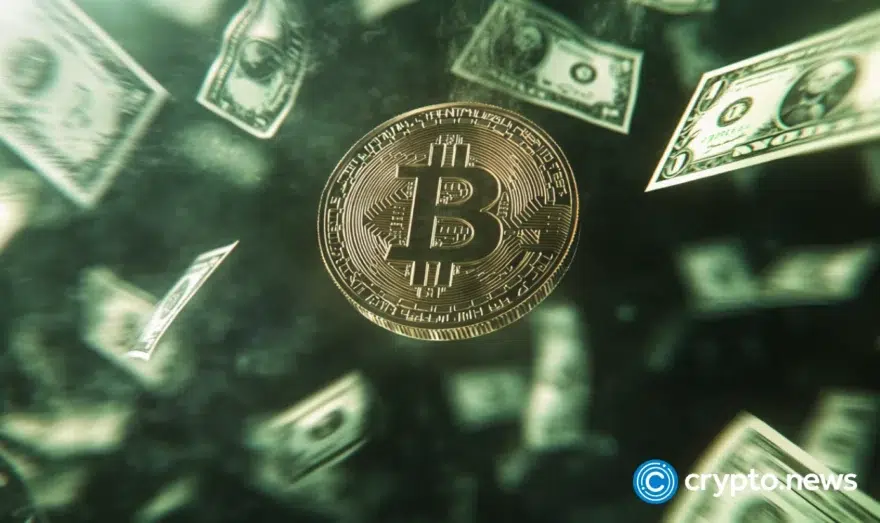Why tracking Bitcoin with fiat is crucial

Challenging a recent claim that tracking Bitcoin against fiat currencies is futile, this article uncovers the indispensable link between them.
Understanding and interpreting the market dynamics is essential in a rapidly evolving cryptocurrency landscape.
Recently, a claim was made on LinkedIn, challenging the practice of tracking Bitcoin’s (BTC) price concerning fiat currencies like the USD.

Keir Finlow-Bates, an advisor at Resonance Security, argues that media news reports are ineffective for measuring Bitcoin’s market highs and lows, suggesting a departure from traditional financial benchmarks.
This article seeks to systematically counter the claim and explain why tracking Bitcoin with fiat currencies is logical and indispensable.
Tracking Bitcoin prices in fiat currencies
Finlow-Bates posits that tracking Bitcoin prices against fiat currencies using media news reports is unproductive and illogical.
This statement leads to a fundamental question that requires examination: how else would the market dynamics of Bitcoin be measured?
Contrary to the claimant’s assertions, comparing Bitcoin against fiat currencies serves an essential purpose in financial markets.
The USD, being the world’s primary reserve currency, acts as a universal gauge for value. During 2021, Bitcoin experienced a tremendous bull run, reaching an all-time high of nearly $68,789 per BTC. This figure can only be quantified and understood as a fiat currency.
Moreover, comparing a value against a universally recognized standard has historical roots.
The Gold Standard, where currencies were pegged to gold, is a classic example. Fiat currencies have taken that role in modern times, with the USD being a standard benchmark. The comparison of Bitcoin to fiat is not an arbitrary choice but follows a tradition of value assessment.
Investors and traders commonly utilize financial tools and techniques to assess the value of assets. Tools like Moving Averages and Fibonacci retracement require a comparative value, often against a stable fiat currency.
By tracking Bitcoin against the USD, traders can make informed decisions, employ risk management strategies, and understand market trends.
Hence, the suggestion that tracking Bitcoin’s price against fiat currencies like the USD is a futile exercise crumbles under scrutiny.
Bitcoin’s nature and behavior
Finlow-Bates categorically states that Bitcoin is neither a stock nor a fiat currency, declaring it as something “completely different and new.”
While there’s no disagreement about Bitcoin not being a stock or fiat, the claim raises concerns when it implicitly denies the common financial behaviors of Bitcoin, such as investment cycles and market fluctuations.
The assertion that Bitcoin behaves differently from traditional financial assets overlooks the cryptocurrency’s multifaceted utility.
Bitcoin functions as a store of value, a medium of exchange, and an investment tool. Like gold, it’s often seen as a hedge against inflation, a perspective supported by several financial proponents.
Despite its unique nature, Bitcoin exhibits typical market behaviors similar to stocks and commodities. It experiences highs, lows, and cycles of correction.
Bitcoin has undergone several market cycles, including dramatic increases followed by significant corrections. The 2017 peak near $20,000, followed by an 80% decline in 2018, is a prime example.
The attempt to completely isolate Bitcoin from other financial assets is misleading. While it introduces new concepts like decentralized control and scarcity enforced by code, its market behavior is not alien to traditional financial analysis.
While Bitcoin introduces novel concepts, its denial of common financial principles is an ill-conceived attempt to mystify what is, in essence, an asset governed by market forces.
The claim is not merely illogical; it is a bewildering mix of half-truths and misconceptions that threatens to misguide both seasoned investors and newcomers to the crypto space.
The application of stock market language to Bitcoin
Finlow-Bates argues that the media’s persistence in using standard stock market language to discuss Bitcoin is misguided.
This raises a question: how should Bitcoin’s trend and market response be defined and reported if not through common financial language and parameters?
Financial markets operate on a shared set of terms, concepts, and metrics that allow investors, traders, and analysts to understand and communicate the behavior of various assets.
This includes Bitcoin, whose price trends, market capitalization, volume, and other factors are often described using the same language as stocks and commodities.
Finlow-Bates’ rejection of standard stock market language overlooks that many tools used to analyze stocks apply to Bitcoin.
Technical indicators such as Bollinger Bands and RSI are used by traders to make predictions about Bitcoin’s price movements, just as they do with traditional assets.
Moreover, Bitcoin has become increasingly integrated with traditional financial markets. Introducing Bitcoin futures on major exchanges like the CME Group and creating Bitcoin ETFs (exchange-traded funds) are testaments to this integration.
Analyzing Bitcoin without these familiar tools and terms would be like describing a modern automobile using only pre-industrial terminology.
The claimant’s desire to segregate Bitcoin’s discourse from standard financial language threatens to isolate it from the global financial community. It’s not merely an illogical stance; it’s a misguided one that could stifle the very innovation and growth the crypto community seeks to foster.
News reports and Bitcoin trading
Finlow-Bates suggests that news reports on price movements are irrelevant to day traders and long-term holders of Bitcoin. The assertion here underestimates news’s role in trading and market analysis.
For day traders, news reports can be critical in understanding market sentiment, economic events, and other factors that might influence short-term price movements.
Although technical analysis is often at the forefront of a day trader’s decision-making, dismissing the influence of news in correlation to an asset’s price is a gross oversimplification.
Day traders must be aware of the market’s broader context. Ignoring news and price reports can leave them blindsided by events that might significantly impact their positions.
Meanwhile, for long-term investors, the news is no less essential. While they may be less concerned with minute-to-minute price fluctuations, understanding the evolving landscape of regulations, price developments, and broader economic trends and their impact on price is crucial.
Dismissing the price analysis news and events in the ever-changing world of cryptocurrency trading and investment demonstrates a lack of appreciation for the multifaceted nature of financial markets. It’s not just an oversight; it’s a misunderstanding that could lead to uninformed decision-making and unnecessary risks.
Mainstream news reports as distracting noise
The claimant concludes by dismissing mainstream news reports as little more than distracting noise. In reality, the media guides many, especially those not professionals in the trading industry.
Whether a day trader looking for quick insights or a long-term investor seeking in-depth analyses, news provides context, perspective, and interpretation of complex financial data.
While there might be noise in the media, distinguishing between signal and noise is part of an investor’s or trader’s skill set. Dismissing all mainstream news as noise oversimplifies the rich array of insights, analyses, opinions, and facts that can be extracted from reputable sources.
Why fiat is important for Bitcoin
From misunderstanding how Bitcoin is measured against fiat currencies to its market behavior, these claims are riddled with logical inconsistencies and a lack of factual grounding.
Bitcoin, as a revolutionary financial asset, deserves a more nuanced understanding. Its complexities, potentials, and challenges must be approached with intellectual rigor and factual accuracy.
Simplistic views, sweeping generalizations, and dismissive attitudes fail to capture Bitcoin’s essence and do a disservice to those seeking to understand or engage with this groundbreaking technology.
In totality, these claims were not just misguided; they were a missed opportunity to contribute positively to the ongoing dialogue about the role and nature of cryptocurrencies in our modern financial landscape.















